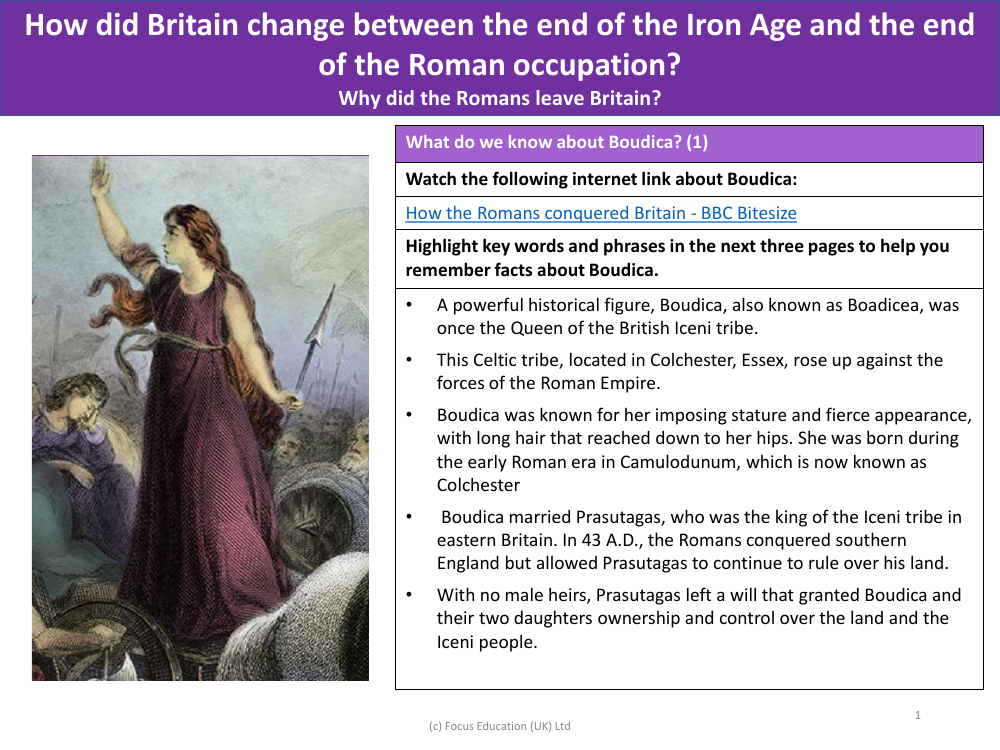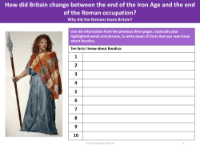What do we know about Boudica? - Info pack

History Resource Description
Boudica, also known as Boadicea, is a significant historical figure from ancient Britain. As the Queen of the Iceni tribe, her legacy is one of rebellion and resistance against the Roman Empire. The Iceni, a Celtic tribe based in what is now Colchester, Essex, were initially allowed to retain some autonomy after the Romans conquered southern England in 43 A.D. Boudica's husband, King Prasutagas of the Iceni, ruled over his lands even after the Roman conquest. Upon his death, Prasutagas's will bequeathed his kingdom to Boudica and their two daughters, but the Romans disregarded his wishes, leading to a brutal uprising. Known for her towering presence and striking red hair, Boudica's appearance was as formidable as her determination to fight against the Roman occupation.
The revolt led by Boudica was marked by its ferocity and scale. She successfully united various tribes who shared a common resentment towards Roman rule, amassing an army that some estimate to have been 100,000 strong. Boudica's forces launched a series of attacks on Roman settlements, starting with Camulodunum (modern-day Colchester), which they burned to the ground, destroying buildings including an unfinished temple. The onslaught continued through Londinium (London) and Verulamium (St. Albans), leaving behind a trail of destruction and a high death toll, with some 80,000 people killed, including Romans and pro-Roman Britons. Despite the initial success, Boudica's rebellion was ultimately quelled by the Roman Governor Gaius Suetonius Paulinus. The brutality of the conflict is still evidenced today by archaeological layers of ash found beneath London, a silent testament to the fierce resistance led by Boudica.



